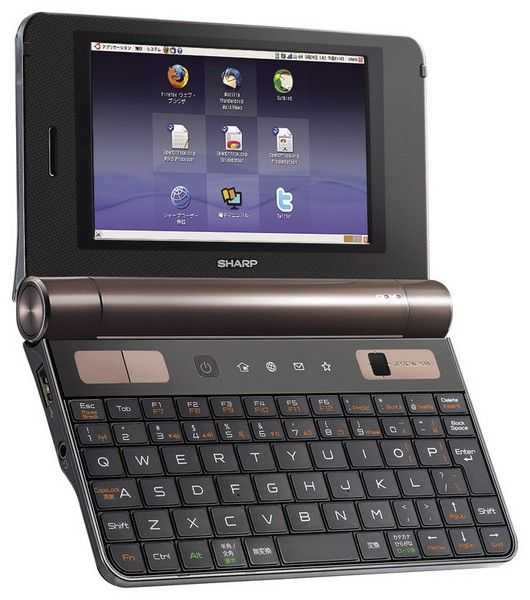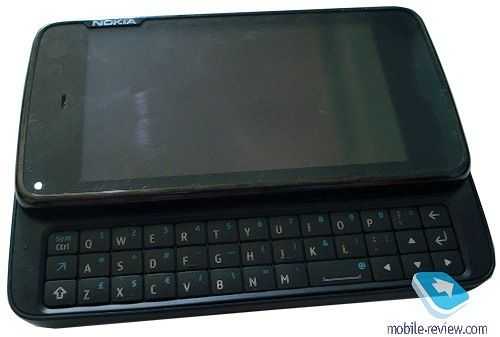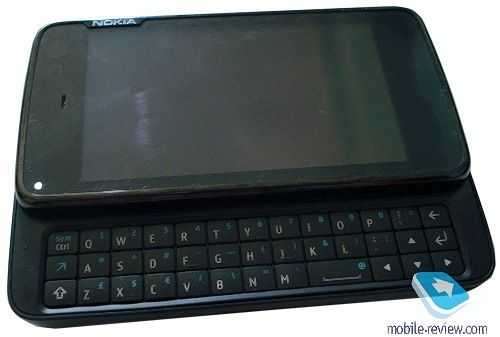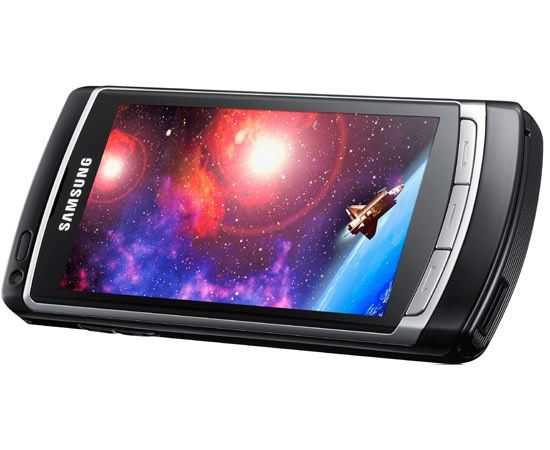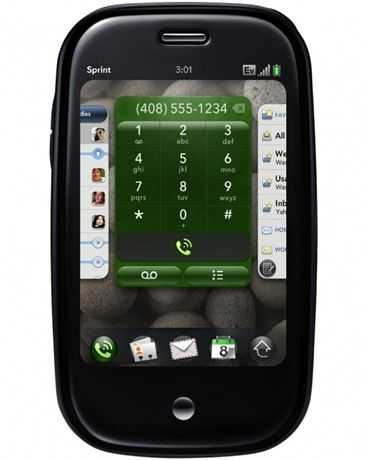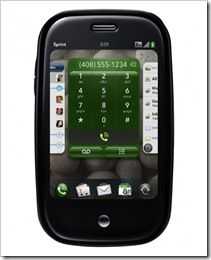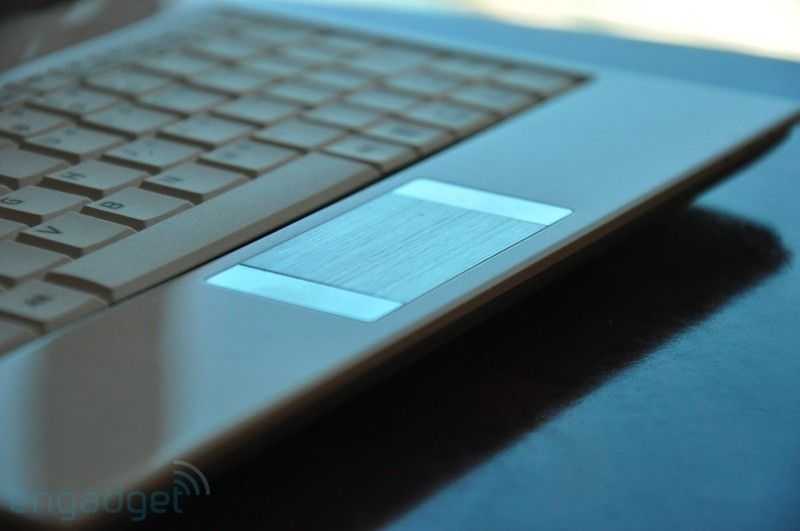The Omnia HD is something that all MID fans should be taking a close look at. It highlights how close the ARM-based platforms are to Intel’s MID platforms. In fact, in many ways, the Omnia HD looks like one of the best MIDs so far with longer battery life, smaller form factor, 720p video recording and a mobile-focused software suite that addresses new mobile markets. It’s an incredibly converged product but at the same time, you could call it a tweener. Neither a 24/7 phone or high quality mobile internet device. I intend to re-visit the Omnia HD by testing it in full in the near future but in the meantime, take a look at the specifications when placed side-by-side with the most popular tablet MID of the day and lets think about how the Omnia HD highlights that there is no such thing as a tweener.
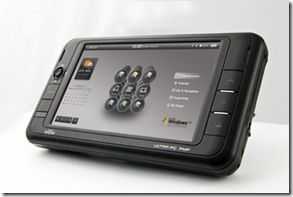
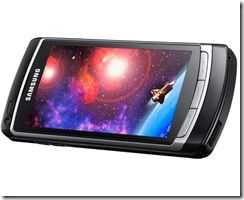
Omnia Image via AreaMobile.
| Viliv S5. (Estimated 800 Euros with 3G) |
Omnia HD 600 Euros |
Comments |
| CPU Intel Atom 1.3Ghz (Menlow platform) |
ARM (Cortex A8) 800Mhz (OMAP platform) |
Atom estimated 2x processing power. |
| Wifi BT 3G (data only) |
Wifi BT 3G (voice and data, HSUPA) |
Voice convergence is important for some. HSUPA important for Europe. |
| 1024×600 4.8 inch screen (250dpi) LED, resistive touch. |
640×360 3.7 inch screen (approx 180dpi) O-LED, capacative touch, |
O-LED will give outdoor readability issues. 640×360 restrictive for web browsing. |
| GPS (no software) |
GPS plus Navteq maps and social networking. |
GPS software for XP is expensive. |
| 5hrs online |
Est, 3hrs online (based on hsdpa talk-time) |
For online use, the Viliv wins but the Omnia is more efficient. |
| 10hrs standby (on, screen of) |
600hrs standby (on, screen off) |
Always-on is important for comms! |
| Windows XP plus touch UI |
Symbian S60 plus mobile software suite (TouchWiz) |
S60 is mobile-focused (some exciting next-gen social and LBS apps available) but no desktop app compatability. |
| No cam |
8mp cam with 720p recording |
720p recording is a huge bonus for the consumer. |
| 400gm |
125 gm |
1/3rd the weight means you can carry an extra two batteries |
| Video playback 720p flexible support, 6hrs |
Video playback 720p, 4.5hrs |
Similar video capability. XP comes with only WMV support out of box. |
| Storage 60GB |
Storage 16GB + Micro SD |
Big storage on the Viliv compared to Omnia. |
| Browsing: Desktop quality, sub 10-second average, full flash and plugins |
Browsing: Limited quality. Estimated 20s page load time. |
Omnia browsing will fall way short of a desktop experience. |
| 3D graphics: Power VR SGX |
3G Graphics: Power VR SGX |
Snap! |
|
Accelerometer |
Good for navi, web, ereading |
|
FM Radio |
A useful, very low power information source. (Local Traffic, news, music, events) |
| Component, S-video out, VGA |
HDMI Out |
Digital output on Omnia turns it into a better set top box. |
| Best USB device support |
Limited USB device support |
If you have USB devices, they are likely to work better with the Viliv S5 |
| Full desktop software capability |
Mobile-focused software capability |
Viliv S5 allows you to carry on using your desktop software. Desktop software is, however, expensive. |
| Availability: Limited roll-out |
Availability: Global |
Omnia HD will be widely available |
| Brand unknown outside Korea |
Top-tier global branding. |
Provides consumer confidence. |
Clearly the Samsung Omnia HD has specifications that are very close to one of the best Intel-based MIDs on the market. You’re looking at an extremely capable hardware platform that provides consumer-focused MID, PMP, PVR and PND-like capabilities in a 24/7 voice-capable form factor. It’s also got mature, consumer-friendly mobile-focused software that tackles new mobile usage scnearios and it’s reached the market before anyone else could with Intel-based MIDs that are targeted at the same usage scenarios. For some it’s going to be seen as the ultimate converged device and one of the best ‘MIDs’ on the market.
Look at it from another angle though and you see a different story. If you want a 24/7 phone, the Omnia HD is very very expensive and for most people, too big. If you’re looking for the best quality mobile web browser, PND, PMP or microblogging device, it falls short on either screen size, keyboard or software. As with most converged devices, it takes new, exciting usage scenarios and lever’s them into compromised form factors.
What I see with the Samsung Omnia HD is a device that underscores exactly the emerging scenarios that MIDs are targeted at. It’s providing a taster of things to come. If these scenarios develop, the new ecosystems created could support dedicated devices that fit in the space between the smartphone and the netbook. With technology like the Texas Instruments OMAP 3 platform and Intel’s Moorestown available to OEMs, it will only be a matter of tweaking the design, the software and applying the right marketing to slot the variants into the new ecosystems.
How about dropping the Omni HD’s internals into a Nokia N810-like form factor and increasing the screen to 4.8 inch with 250 DPI to improve the focus on mobile geo-enabled social networking? How about adding a powerful photo flash and video editing software to enhance mobile photo capabilities and add how about adding a daylight-readable 6″ screen for a move into the ebook market? Think about an iPod Plus, a Kindle with a fast browser and think about the next Nokia Tablet. A Techcrunch Crunchpad or a Google Lattitude Social Tablet. A Canon/YouTube device or even a dedicated Vodafone/BBC iPlayer. I don’t propose that all of these are winning business opportunities but I bet there are a few opportunitues in that list for dedicated devices that people have called ‘tweeners’ in the past.
The real story here is three-fold. The Omnia HD highlights how advanced and flexible the latest smartphone platforms are. It highlights that new usage models are emerging and that if these ecosystems grow, there will be opportunities for dedicated devices. Thank-you Samsung for highlighting that the MID concept is on the right track and that the end of the Tweener-era is nigh.

